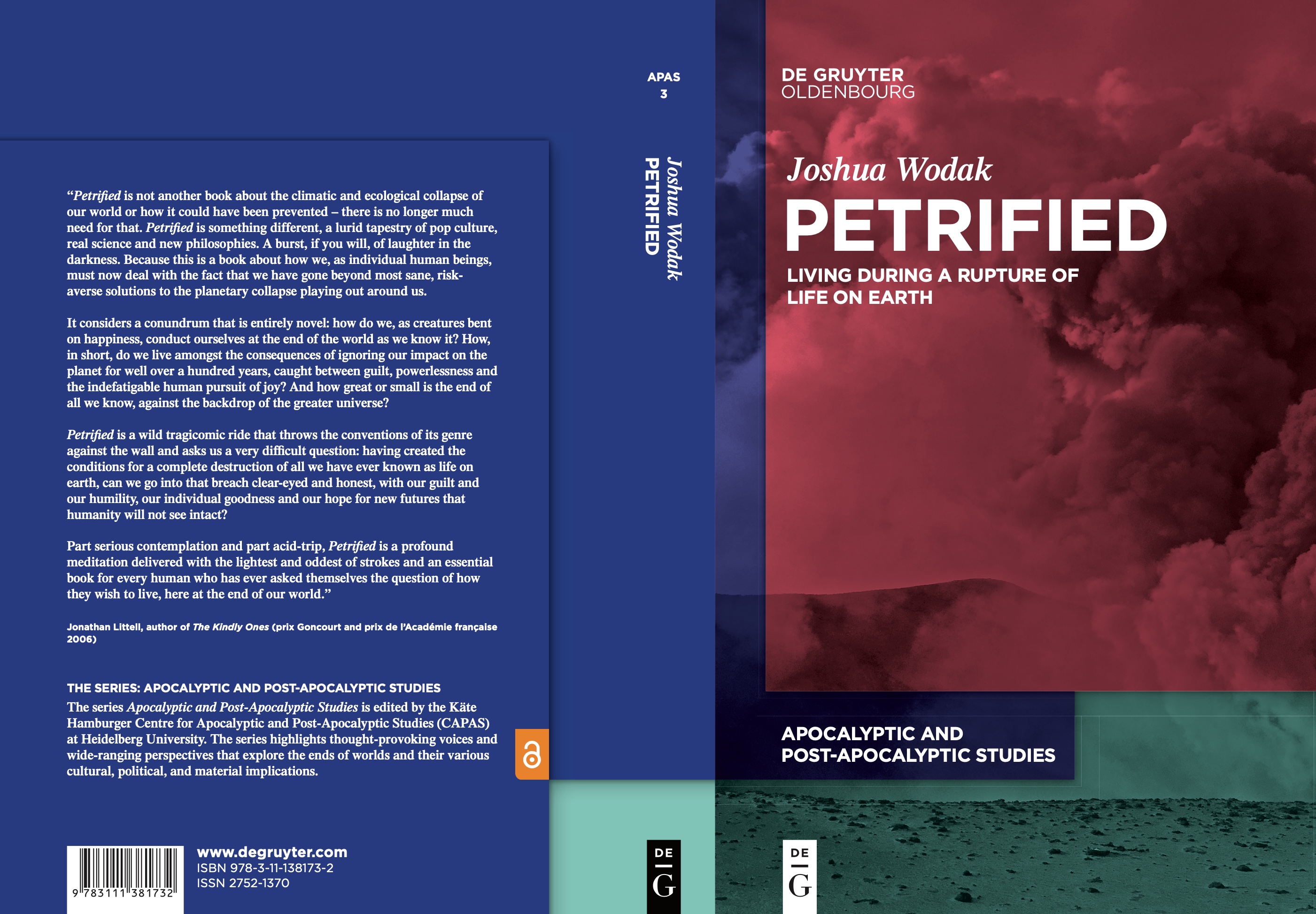
Petrified: Living During a Rupture of Life on Earth (2025)
A rupture of life on Earth is currently unfolding. What, then, does this rupture signify, not only in terms of being alive during such an upheaval, but also in terms of being alive to upheaval itself? Petrified: Living During a Rupture of Life on Earth takes the reader on a journey deep into the nature of our home, to give us the tools to learn how, in the middle of that rupture, to comport ourselves with honesty, clarity, culpability and intelligence.
The purpose of this journey is straightforward: to formulate the basis of a philosophy for living during this rupture of life on earth. A philosophy for living in the twenty-first-and-last century of life as we have known it on our planet. A toolkit, as it were, for living at the confluence between being petrified at the prospect of extinction, and becoming petrified in the most real and physical sense.
Lyrical, playful, and deadly serious, Petrified aims to provide a new worldview for a new world coming, creating a present-day fable about achieving fidelity to the vicissitudes of the cosmos. Wherein, the book asks: if desperate times call for desperate measures, how can the response be measured against its only true correlate – the cosmos?
The book is available in hardcover, and Open Access, so PDF and EPUB versions are free to download from the publisher. Full publication details, and download links, are available from the publisher here.Petrified was reviewed by Jonathan Littell in Le Monde on 13 June 2025, available in French here. and in English here.
The following is the front and rear cover.

The novels below form a trilogy, collectively titled Today's E.P.C.O.T, with the first two being about different Experimental Prototype Communities of Today in India and the third being less a novel and more a novel rhizomatic map of a mind-in-motion towards an Experimental Prototype Community of Tomorrow.
come 2 0... (1999-2007)
'angin I I quiet desperation
('alf
an
'age
o'
dibbled
pine)
LANOVELLA IN 1789 PARTS
('alf
an
'age
o'
dibbled
pine)
LANOVELLA IN 1789 PARTS

Table of contents of 1789 PARTS
Following Footsteps to See the Source: Don't Look Back (2003-2005)
Following the themes and issues in From C2R: The Big Boom Theory (described below), Following Footsteps to See the Source: Don't Look Back investigates tensions of sustainability amidst unsustainable human pressures between pilgrimage, conservation and development as encountered over a 6 month solo-secular journey I took, following the Ganga from its Himalayan source on the border with Tibet to where it becomes the sea in the Bay of Bengal. What follows is a wild form foray of travelling along the length of one of the great rivers of the world while encountering stragglers from all walks of life: politicians, polluters, crusaders, contributors, artists, activists, anarchists, scholars, saints, scoundrels, sadhus, sannyassis, sages, seers, swagmen, madmen, mystics and mendicants.
The following is the cover, and list of chapter titles in the structure of 5 Phases, each corresponding to a section of the river, with Phase 1 the source and Phase 5 the sea.
Phase and Chapter titles and Cover from Following Footsteps to See the Source: Don't Look Back
From C2R: The Big Boom Theory (2000-2004)
From C2R: The Big Boom Theory is a surrealist study of tourism, conservation and development amidst communes of Israeli and European expatriate communities who hide in hamlets in certain taboo hobbitesque valleys of the western Indian Himalaya, where escalating mafia wars between local dons and underground overlanders on the run from the law ensure that they have lost themselves one-and-all in a paradise lost. It is based on three gonzo anthropology trips through the area in 2000 and 2003 and the logical extension of recording an album of experimental music with a Swiss mystic who whiles away the days in a remote village that suffers as the construction site of the second largest dam in India.
The following is the list of chapter titles in the structure of 4 Stages, each corresponding to the size of the stages of the Parvati Valley Hydroelectric Projects.


